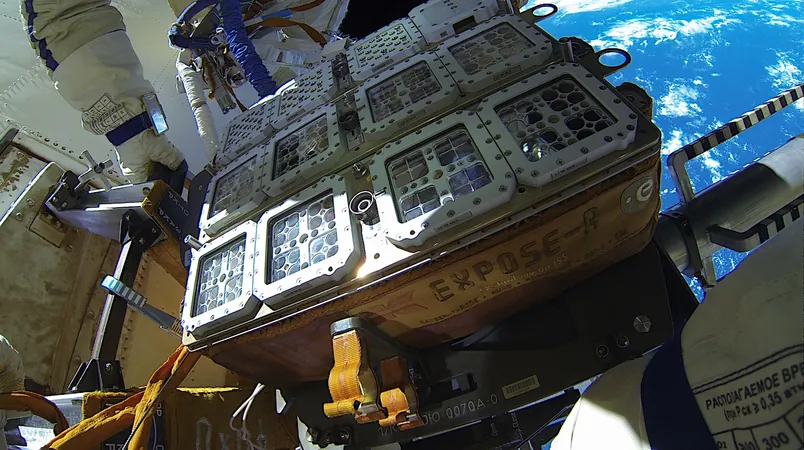
Groundbreaking ISS Study Reveals Secrets of Amino Acid Stability on Mars
2025-03-30
Author: Ming
Groundbreaking ISS Study Reveals Secrets of Amino Acid Stability on Mars
A cutting-edge experiment aboard the International Space Station (ISS), known as the Photochemistry on the Space Station (PSS), has opened new doors in our understanding of astrobiology.
Conducted during the European Space Agency's EXPOSE-R2 mission from 2014 to 2016, the PSS experiment examined how montmorillonite clay could protect organic compounds from the debilitating effects of ultraviolet (UV) radiation found in space.
The research focused particularly on alanine, an amino acid crucial for life. Scientists investigated how montmorillonite might not only shield alanine from UV degradation but also potentially catalyze its breakdown.
To explore this, researchers engineered various samples: pure alanine thin films, alanine films shielded by montmorillonite layers, and a blend of the two that formed an organoclay composite.
These samples were subjected to the harsh conditions of space for an impressive duration of 15.5 months before being returned to Earth for comprehensive analysis. Concurrent experiments on Earth utilized simulated solar irradiation for a direct comparison, enriching the study's findings.
Using Fourier-transform infrared (FTIR) spectroscopy, scientists compared molecular changes in the samples, providing insight into how space conditions affected alanine's stability.
Further analysis through time-resolved FTIR spectroscopy deepened the understanding of the photochemical processes at play.
Results revealed a fascinating dual role of montmorillonite: a thin protective layer slowed the degradation of alanine by absorbing harmful UV rays, while an intimate mixture of clay and alanine accelerated its photochemical decomposition by facilitating certain reactions.
This highlights the complexity of chemical interactions in extraterrestrial conditions, particularly in environments like Mars.
One significant finding involved carbon dioxide (CO2), a byproduct of alanine breakdown, which could serve as a tracer for studying amino acids.
The research indicated that this CO2 can become trapped within the interlayers of the clay—a crucial detail for understanding the stability of organic compounds on the Martian surface.
These insights not only shed light on the preservation potential of amino acids in extraterrestrial settings but also emphasize the necessity of thick mineral covers to effectively shield organic materials from UV radiation.
As we continue to explore the cosmos, studies like these provide pivotal knowledge that could answer fundamental questions about the origins of life beyond Earth.
Stay tuned as our journey through the mysteries of the universe unfolds, one discovery at a time!


 Brasil (PT)
Brasil (PT)
 Canada (EN)
Canada (EN)
 Chile (ES)
Chile (ES)
 Česko (CS)
Česko (CS)
 대한민국 (KO)
대한민국 (KO)
 España (ES)
España (ES)
 France (FR)
France (FR)
 Hong Kong (EN)
Hong Kong (EN)
 Italia (IT)
Italia (IT)
 日本 (JA)
日本 (JA)
 Magyarország (HU)
Magyarország (HU)
 Norge (NO)
Norge (NO)
 Polska (PL)
Polska (PL)
 Schweiz (DE)
Schweiz (DE)
 Singapore (EN)
Singapore (EN)
 Sverige (SV)
Sverige (SV)
 Suomi (FI)
Suomi (FI)
 Türkiye (TR)
Türkiye (TR)
 الإمارات العربية المتحدة (AR)
الإمارات العربية المتحدة (AR)